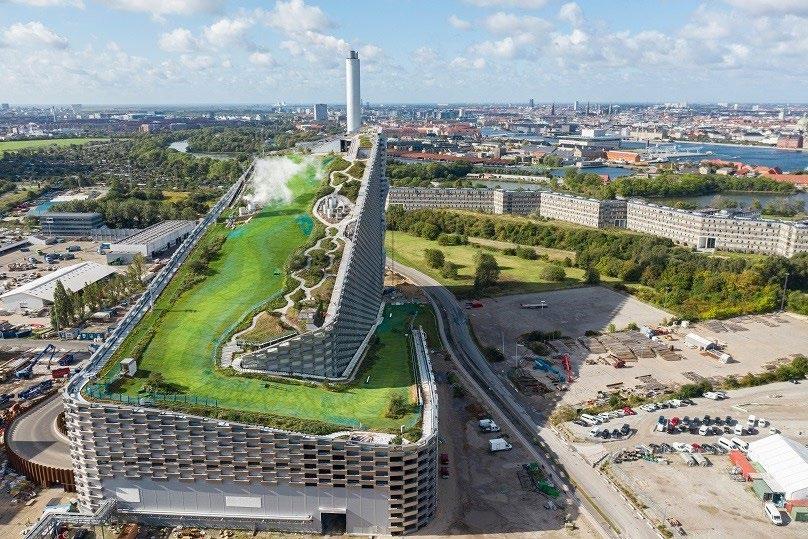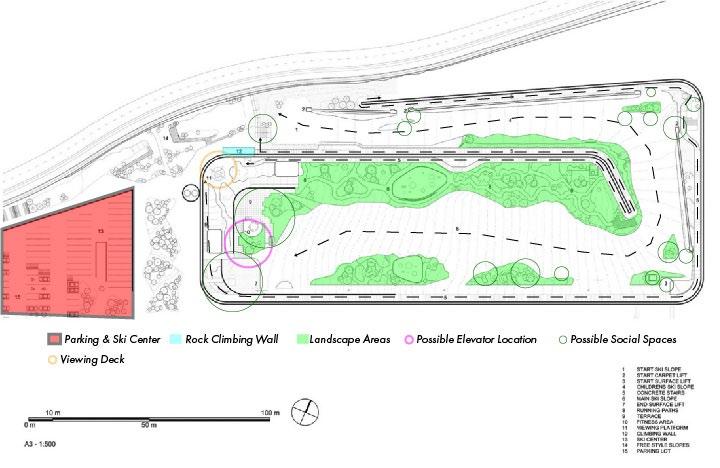
1 minute read
References
Environmental Sustainability
Copenhill is constructed completely of steel frames, while only the roof is made by a series of sloping concrete slabs. The External façade of the Copenhill is clad with blocks of aluminium which are 3.3 m x 1.2 m, these aluminium “bricks are alternately stacked to create an alternating pattern, which then creates spaces that are then installed with glazing or ventilation louvres. Being a waste to energy power plant, the Copenhill within the lavish exterior lies 24 hours operating machine which consist of furnaces, steam and turbines that convert 440,000 tons of waste a year, which is enough clean energy to power 150,000 homes with electricity and heating. (CopenHill: Hedonistic Sustainability | urbanNext, 2021)
Advertisement
Figure 1 Copenhill plant flow diagram. Image: ARC (Amager Resource Center). 1. Waste reception 2. Waste silo 3. Furnace systems 4. Boilers 5. Turbine and heat exchangers 6. Flue gas cleaning 7. Slag and fly ash 8. Water treatment 9. Operation.
3 – Furnace System Two similar furnaces treat between 25 and 35 tonnes of garbage each hour. The combustion grate is made up of 24 rows of perforated metal sheets. The furnaces operate at temperatures ranging from 950 to 1,100°C. The garbage is incinerated for 1.5-2 hours.
4 – Boilers The two boilers are made out of a container with multiple close-fitting tubes that have high-pressure water running through it. At 70 bar and 440°C, the pumps sustain heat and pressure. Each boiler can generate 137 tons of steam every 60 minutes. The steam turbine is fed by steam from both boilers. The heat from the hot smoke coming from the furnace is likewise transferred by the plant. High-pressure steam contributes for 90% of the waste's energy.



